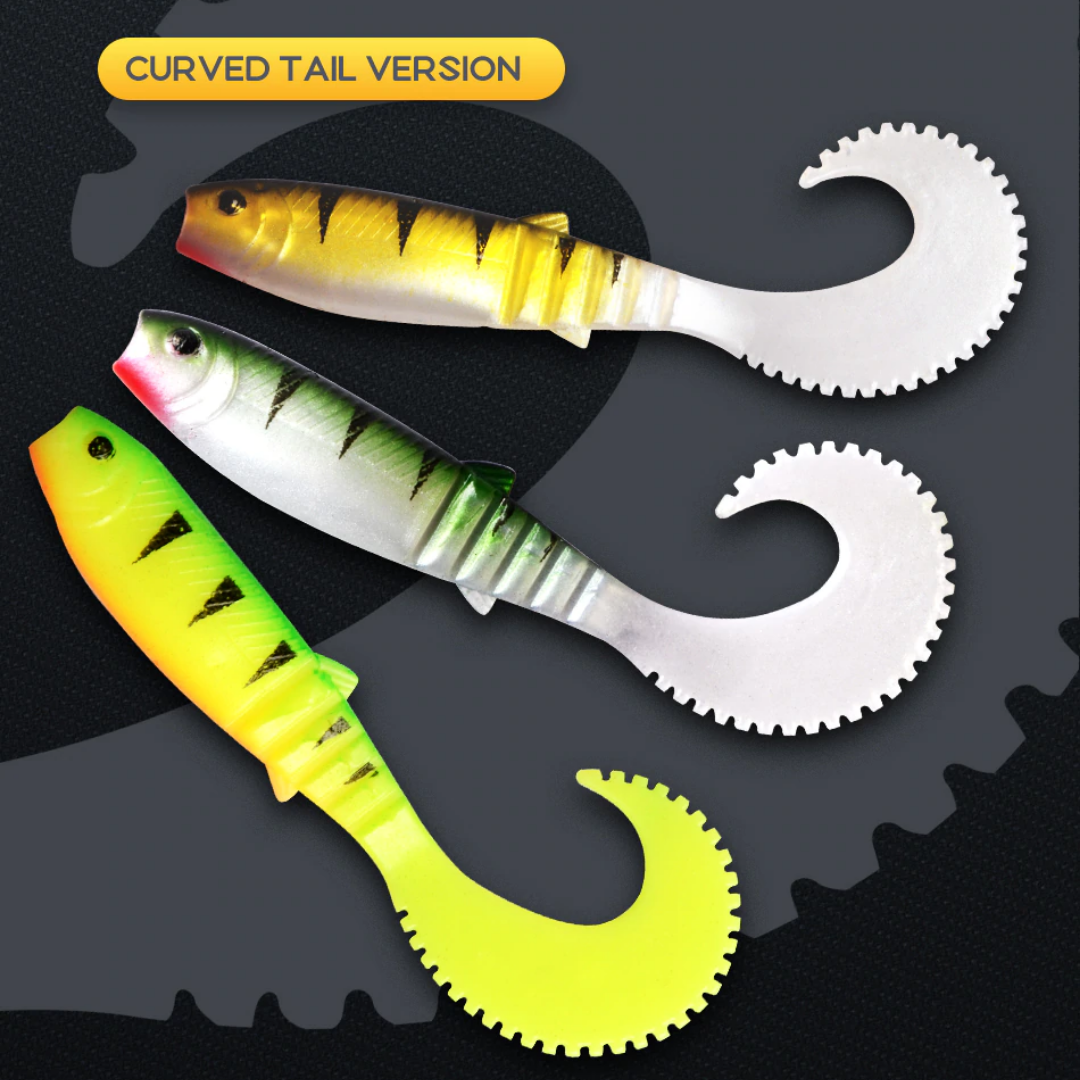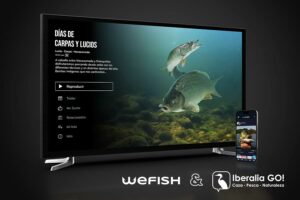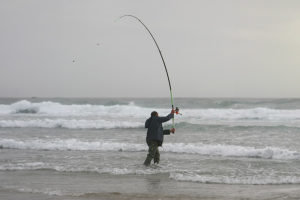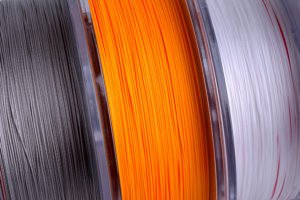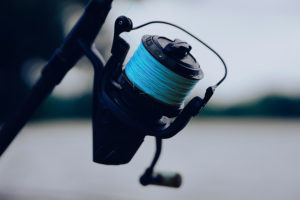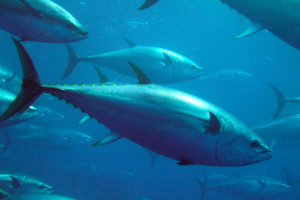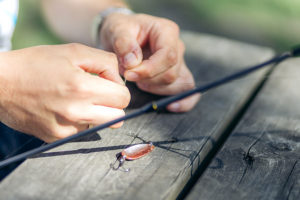Los vinilos son, sin duda, uno de los tipos de señuelos más geniales que podemos utilizar, tanto por la variedad de soluciones que nos aportan como por su eficacia. La perfección en su fabricación hoy en día hace que realmente parezcan peces vivos, convirtiendo a la pesca con vinilos en éxito asegurado.
La oferta de mercado de vinilos es particularmente amplia. Tamaños, colores, formas, densidades, texturas, etc. En resumen, todo un conjunto de posibilidades que no siempre facilita la elección de uno u otro modelo. Entonces, ¿cómo te decides?
En esta nueva entrada del blog de WeFish analizaremos en detalle los motivos que pueden sustentar nuestra elección en cuanto a vinilos, aconsejados por el pescador experimentado y CEO de Go Fishing Portugal: Vítor Ganchinho. ¡No te la pierdas!
Introducción a la pesca con vinilos
Para introducirnos en la pesca con vinilos comencemos caracterizando los que existen: En general, disponemos de vinilos más adecuados para la pesca en superficie en mares agitados, vinilos para pesca de altura en zonas de corrientes, vinilos para mares muy tranquilos y micro vinilos. Estas son las cuatro situaciones más habituales y los límites entre cada situación suelen ser bastante difusos, por lo que conviene tener una idea precisa de cada una de estas variantes. Los micro vinilos son muy específicos ya que son exclusivos de Light Rock Fishing y no encajan en absoluto en las tres categorías anteriores por lo que no los tendremos en consideración en esta entrada.

Un buen consejo es evitar comprar material de pesca por impulso, comprar para comprar. Por ello vamos a enumerar las características que nos permitan «adivinar» qué podemos esperar de nuestro vinilo antes de comprarlo. El grado de rigidez del señuelo es determinante: Cuanto más suave, más absorbe las vibraciones, más discreto, por lo que jugamos solo con su efecto visual y no con el estímulo de la línea lateral del pez. Cada fabricante, al producir un señuelo, busca que tenga un cierto tamaño, una cierta rigidez, una cierta vibración. Esto lo hace pensando en un tipo de pez, u otro, tiene en mente una situación de pesca específica y concreta en la cual se podría usar su producto.

Tipos de vinilos
Veamos a continuación que tipos de vinilos existen y cómo usarlos en cada situación práctica de pesca en concreto.
Slug
Los ‘slugs’ son de colores, delgados y largos, se asemejan a la forma de anguilas pequeñas o gusanos. Son un manjar para las lubinas en versiones de 10, 16 y 20 cm. Los buscan con avidez y por tanto son un tipo de vinilo muy recomendable. Este señuelo es largo y muy suave, no tiene puntos de contacto que hagan demasiada fricción con el agua, así que sus movimientos no emite demasiadas vibraciones.
Y es que no siempre son necesarias las vibraciones, por ejemplo en aguas bajas, claras, tranquilas o en zonas muy frecuentadas, donde la pesca se realiza de forma habitual, los peces se cansan rápidamente de las vibraciones, dejan de correr y empiezan a buscar algo más tranquilo, más natural. En estas circunstancias un vinilo más suave, más largo, más ondulado, con una hidrodinámica diferente, tiene claras ventajas. Un vinilo más rígido, con una cola corta y muy ancha, provocará un exceso de movimiento que no es natural, que no imitará fielmente a ninguna presa y será rechazado.
La calma de las aguas también nos obliga a lanzar más lejos, donde el pez es más receptivo, lejos de los ruidos. Ruidos que provocamos nosotros al caminar por la orilla o en el barco ya sea por el impacto de las olas o por el ruido que hacemos en el interior del mismo. La solución es que en zonas de mucha pesca seamos discretos y elijamos un ‘slug’. Savage tiene vinilos de este tipo que son buenas máquinas de matar. Permiten lanzamientos largos, ya que ofrecen menor resistencia al aire, y el uso de cabezas de plomo, donde se fija el anzuelo.
Al lanzar a distancia, tenemos la posibilidad de ejecutar un tipo de movimiento llamado ‘darting‘ y que no es más que el cambio brusco de dirección del vinilo, en zigzag, provocado por pequeños movimientos de la punta de nuestra caña. Sólo es posible con cabezas de plomo plateadas. Esta es una técnica absolutamente fatal para nuestros depredadores.

Shad
Los ‘Shad’ son ejemplares que tiene cola redonda, una visera que se opone al desplazamiento, que se traba, y que por tanto provoca turbulencias. Esta parte puede ser más o menos perpendicular a la dirección en la que recogemos nuestro señuelo.
Están hechos con un material más rígido, por tanto más reactivo, más nervioso, más vibrante, y podemos esperar resultados diferentes. Mientras que a los señuelos blandos tenemos que darles vida, con toques de la caña, con los rígidos no hacen falta, la simple recuperación de la línea será suficiente. Al ser más duros ofrecen resistencia al desplazamiento y, por tanto, emiten vibraciones. Si vamos en barco y el agua está agitada, movida por las olas, un vinilo shad más rígido con solapa puede ser la mejor opción. Anularemos el ruido del oleaje y nuestro vinilo rígido emitirá suficientes vibraciones como para poder ser detectado por el depredador. Sin duda, son los más buscados por nuestros pescadores, pero no solo por comodidad y facilidad de pesca, sino también por su capacidad de engaño.
Simplemente es lanzar y recuperar la línea. No capturar nada siempre se puede atribuir a otras razones, la luna, la marea, las redes, las estrellas… pero nunca al hecho de que estemos trabajando mal nuestro señuelo, o de que hayamos tomado una decisión equivocada. En el caso de los Shads, el ángulo que forma su cola, más o menos inclinada, puede cambiar nuestros resultados. Más inclinado permite que fluya más agua, por lo que nada con más fluidez y genera menos vibraciones. Más perpendicular hace más fricción, bloquea más al señuelo, por lo tanto más resistencia, más presión en recuperación y más vibraciones. Recuerda: cuando hay demasiadas vibraciones, es posible que estemos ahuyentando al pez y no atrayéndolo. Todo lo que no es natural provoca miedo, rechazo.

Pesca con vinilos en aguas profundas
¿Cómo elegir cuando pescamos en aguas profundas? Aquí, la elección es aún más evidente. Sabemos que nuestro shad de cola rígida emite buenas vibraciones, pero también sabemos que ofrecerá mucha resistencia en la bajada porque la visera ejercerá presión y hará de paracaídas. Si ofrece resistencia cuando enrollamos la línea en el carrete también la ofrecerá cuando queramos que baje al fondo, y necesitamos que baje rápido.
Si pescamos en vertical, no hay nada peor que hacer pasar el señuelo por debajo del barco hacia el otro lado. Si pescas a favor de la corriente está bien, si pescas al revés, al otro lado del barco, en contra del viento y de la corriente, será mucho más difícil. Además, intentar compensar la falta de descenso con más peso en la cabeza hará que baje, sí, pero la animación y movilidad que podamos darle al señuelo será mucho menor. Funciona mal. En estas circunstancias lo mejor es optar por un vinilo que ofrezca menos resistencia, un Slug. Si nuestro vinilo va unido a un plomo cuya cabeza tenga forma cónica, mejor, porque bajará más rápido. En las zonas profundas se le da importancia a la velocidad de descenso, ya sea utilizando señuelos que ofrezcan menos resistencia, o bien líneas trenzadas adecuadas para ello, para el hundimiento (las llamadas sinking).

Conclusiones sobre la pesca con vinilos
En el momento de la verdad de nada sirve tener al pez a tiro si no sabemos qué hacer con el señuelo, aunque hayamos escogido el perfecto para la ocasión. No es suficiente con lanzar el señuelo y ya, la velocidad de recuperación y los impulsos que le damos pueden ser determinantes para el éxito. Existe una velocidad de recuperación óptima, dependiendo de las condiciones del mar e incluso de la época del año. En verano, con aguas cálidas y peces muy activos, la velocidad no es la misma que en invierno, con los peces algo aletargados por las frías aguas.
Hacer una recuperación muy lenta puede desmotivar al pez, que tiene mucho tiempo para seguir y analizar el error. En cambio, una recuperación demasiado rápida puede hacer inviable nuestra captura, porque pasado cierto punto, el señuelo ya no funciona, se mueve a una velocidad imposible y antinatural. No olvidemos que los peces suelen optar por comerse a los más débiles, los más lentos, los que suponen el menor gasto de energía. Un depredador no se agota detrás de algo que es demasiado pequeño, ni le merece la pena nadar por algo demasiado rápido que le obligar a una ingesta alta de calorías. Por eso, cada vez que compramos un nuevo vinilo siempre tendremos que probar su velocidad de recuperación más productiva.
En resumen, hay un señuelo adecuado para cada tipo de pesca con vinilos, y nos toca a nosotros saber leer el agua y decidir, según las características de nuestra pesca, qué vinilo se adapta mejor a esa situación concreta. Básicamente, y como siempre, tendremos que pensar en pescar antes de hacerlo para obtener resultados.
Os recordamos que toda la información de esta entrada proviene del texto original de Vítor Ganchinho ‘Pescamos com vinis – Sim, mas como escolher?’.
Recomendaciones de vinilos de pesca
Ahora que ya sabéis cómo elegir vinilos en función de la situación de pesca concreta, ya sólo queda comprarlos y probarlos. La comunidad WeFish nos recomienda a diario productos de pesca, aquí os dejamos los vinilos más recomendados por nuestros usuarios:



Únete gratis a la mejor app de pesca para aprender más sobre la pesca con vinilos, encontrar las mejores recomendaciones sobre estos productos, ver capturas espectaculares… ¡Y mucho más!




